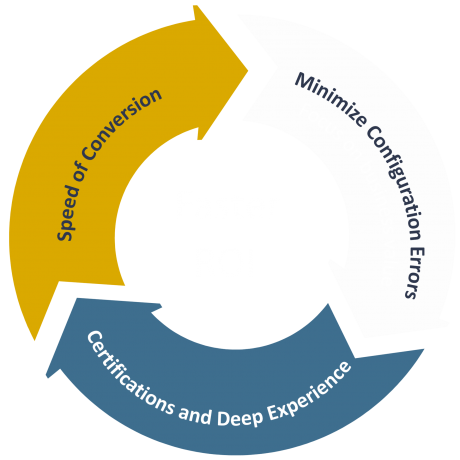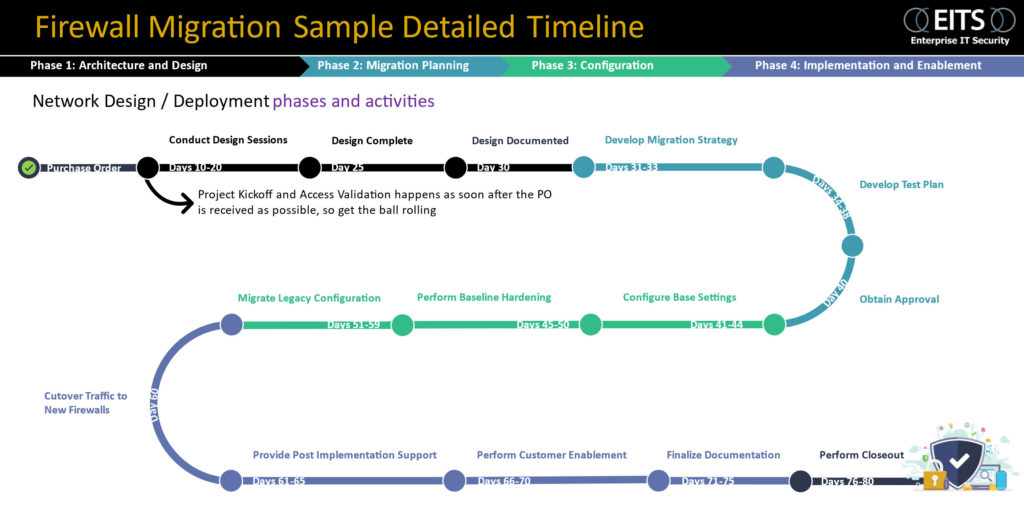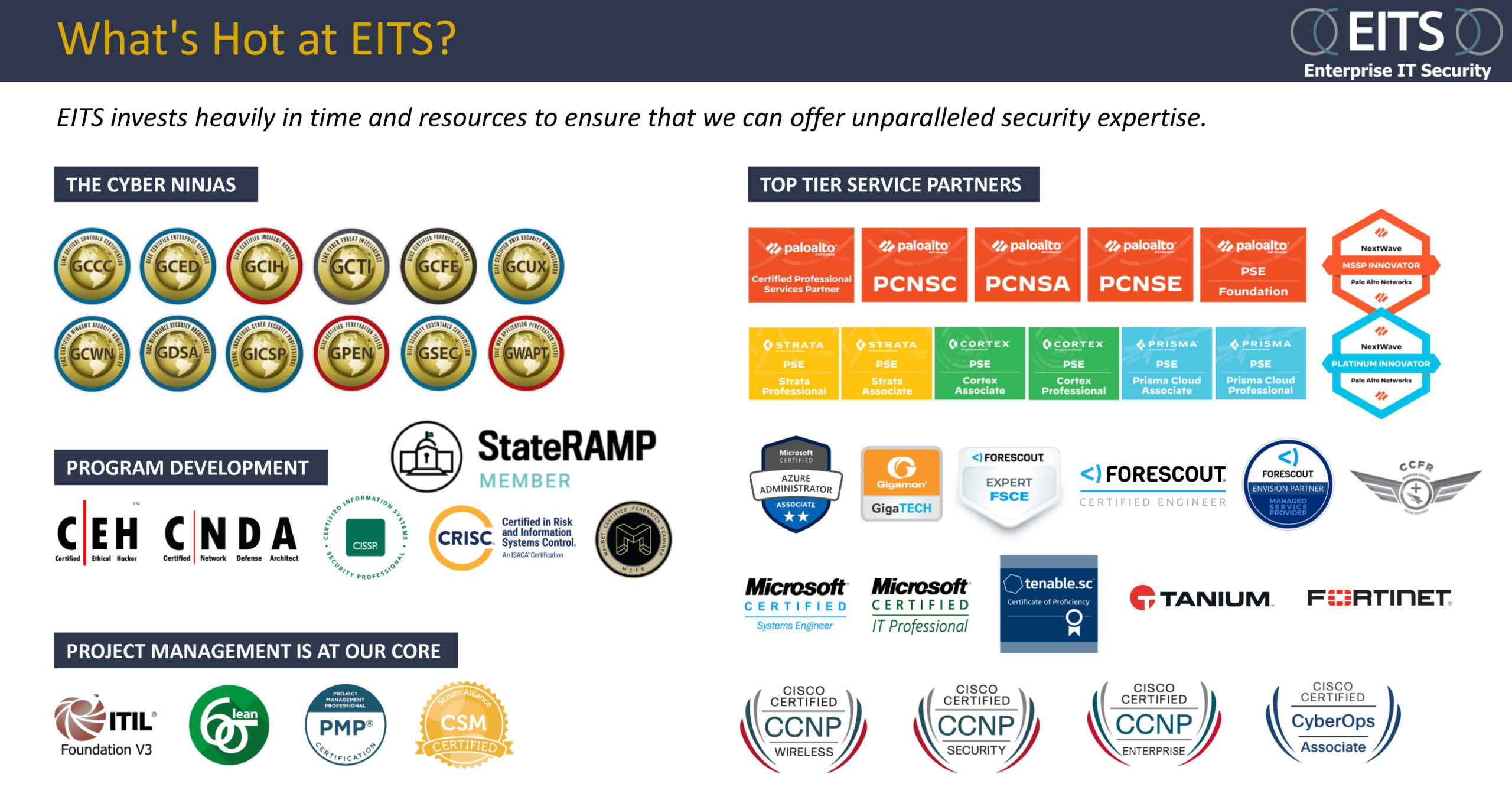Migration To Next-Generation Firewalls
Special Offer: Free Best Practice Assessment on a Network Segment
Designed to keep your first line of defense ironclad 24/7
The EITS firewall management as a service prioritizes improvement opportunities and enables success with the platform agnostic Next Generation Firewall through a proven, structured process. Findings are given a “Value” rating based on risk to the organization, level of effort to remediate, and complexity of the change. We work with your team to plan and execute changes, and report quantifiable improvements following each firewall health check. By repeating the health check process on a regular schedule, we can show tangible improvements in your security environment over time.
- Free up your IT staff to focus on top priorities
- Standardize process and configuration standards utilizing best practices
- Robust reporting for impactful auditing and remediation
- The knowledge you need to fully understand your investment and maximize it's abilities
Why Migrate to Next-Gen Firewalls?
Why EITS For Your Firewall Migration To NGFW?
- Critical Advanced Dynamic Routing Experience
- Maintain Focus on Strategic Investments
- Proven Methodology
- Improved Security and Functionality
- Mainstream FW Integration Experience
- Attention to Compliance Regulations

Beyond A Traditional Firewall
5 Core Benefits to Organizations
Cost Of A Breach - Global View
*IBM Security Cost of a Data Breach Report 2023
EITS Firewall Migration Sample Timeline

Total Economic Impact
*"What is the estimated time it took your organization to achieve steady state security posture with NGFW versus point solutions?"
(Displaying top 5 results only)
*The Total Economic Impact™ Of Palo Alto Networks For Network Security And SD-WAN 2021 A FORRESTER TOTAL ECONOMIC IMPACT™ STUDY COMMISSIONED BY PALO ALTO NETWORKS

Contact us to learn more about how we can help your organization improve and maintain proactive firewall security.

Cyber Security Services
Resources
Contact
- (704) 900-8042
- 525 North Tryon St. Ste1600, Charlotte, NC 28202